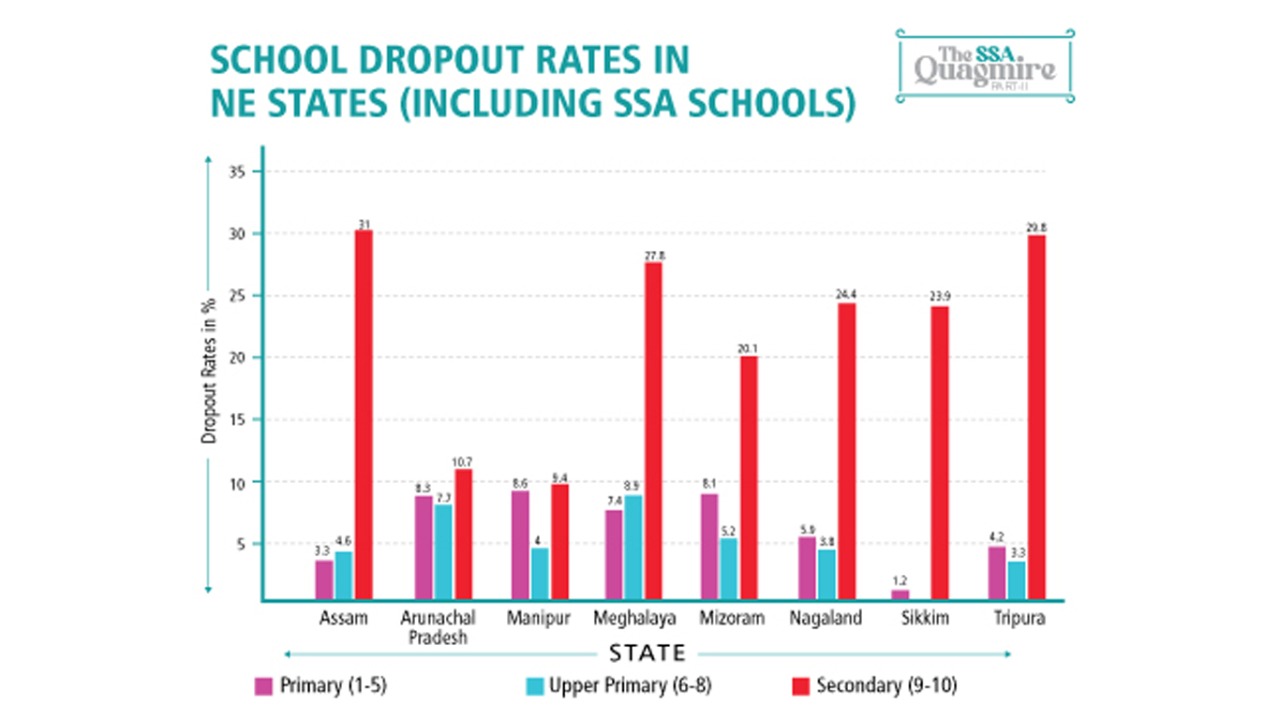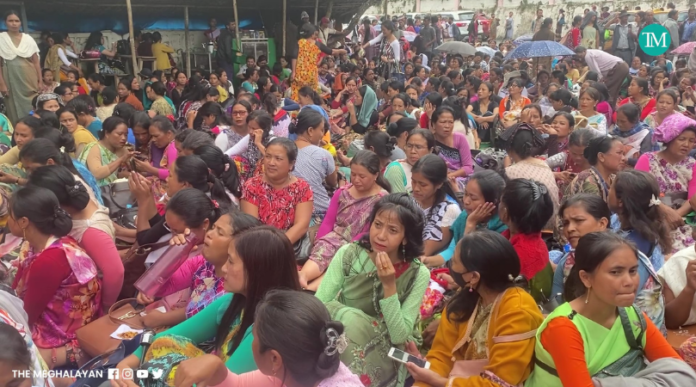By Abha Anindita
A nearly month-long strike by the Meghalaya Sarva Shiksha Abhiyan Schools Association (MSSASA) was called off on Thursday last week, after the state government agreed to clear pending salaries of four months out of five following a threat by the teachers to tender mass resignations.
While the issue of financial irregularities, including non-payment of salaries, fund misutilisation and diversion, have come to the fore in recent years, much of it is historically connected with the improper implementation of the programme, thereby skewing its primary goal — providing elementary education for all children between the age of 6 and 14.
When the SSA was conceptualised, it incorporated several incentives to encourage students to go to school. Some of them include providing free uniforms, textbooks and workbooks to primary and upper primary students such that lack of financial ability does not become a deterrent for them to attend school.
In Meghalaya, however, up till 2005, the Comptroller and Auditor General (CAG) reports suggest that 45.18 per cent students belonging to the urban areas had received only a part of the textbooks meant for them and 30.56 per cent students had not received at all.
This data has to be closely looked at with the dropout rates of students, resulting from poor educational outcomes, emerging from the lack of proper programme implementation.
In 2006-07, Meghalaya fared in the list of states with the highest dropout rates. Data from the Ministry of Human Resource Development (now Ministry of Education) showed that the state had a dropout rate of 60.41 per cent up to the eighth standard.
While this figure has dramatically improved in recent years, Meghalaya still fares in the list of states with high dropout rates. In 2017, the state government had said that nearly one lakh students had dropped out of schools in a span of four years.
The CAG report of 2017 also highlights that 82 to 97 per cent of the eligible students were deprived of free school uniforms due to misallocation and shortage of funds between 2012 and 2015.

The erroneous implementation of the SSA also has its roots in the improper allotment of resources meant for school and student development.
CAG reports show that school grants of about Rs 1.13 crore had not been used for educational purposes at all in the states of Meghalaya, Jharkhand and Manipur up till 2005.
Even with such discrepancies at play, the programme tried to encourage educational activities among girls and marginalised students by implementing innovative schemes.
Some of the schemes included Early Childhood Care and Education (ECCE), Inclusive Education for Disabled (IED) and computer education for upper primary students and teachers.
While Rs 83 lakh had been made available for these schemes in Meghalaya, the state had confessed that it failed to implement such interventions in many districts.
With such cases in focus, Meghalaya had managed to violate many norms of the programme.
One such norm which was also violated was the teacher-pupil ratio which, as per the programme, is one teacher for 40 students.
The SSA Evaluation Study report, launched by the state government in 2011, mentions that only 4 per cent schools had a ratio greater than 40 in both primary and upper primary level. This data point has not seen any significant improvement even till date.


